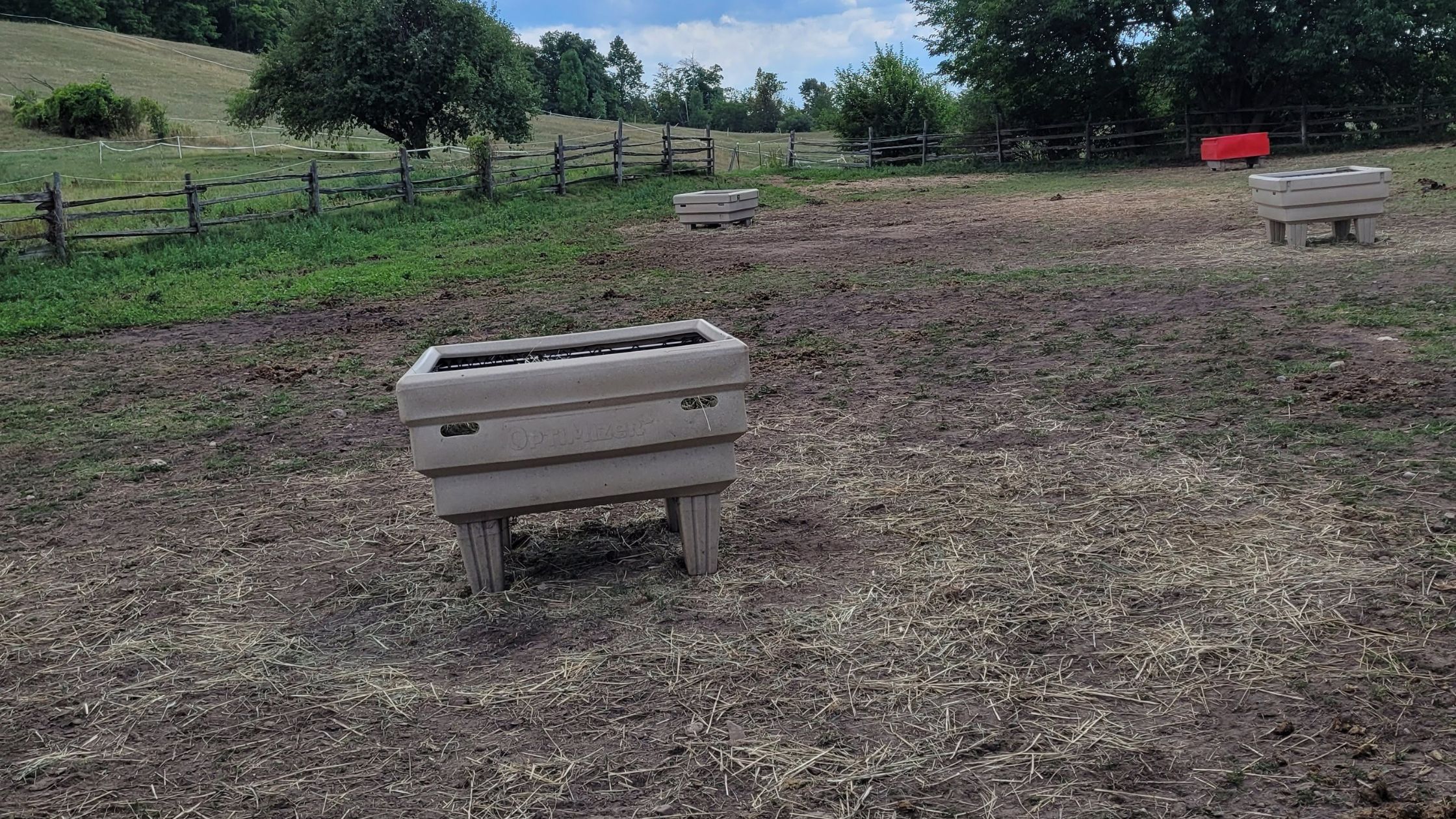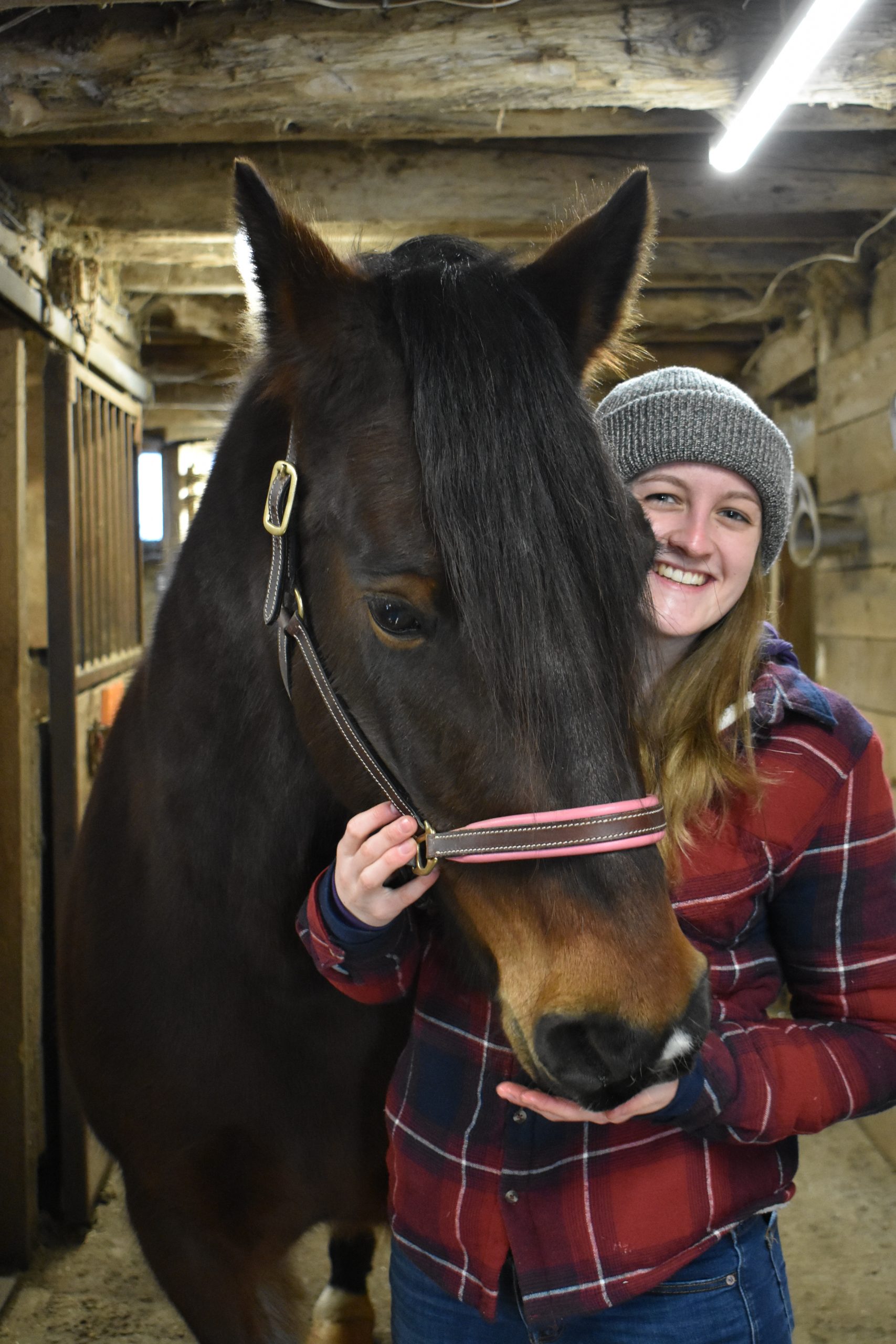Hay waste is a key issue when caring for horses. We commonly see two types of waste:
- hay that is wasted on the ground, by blowing away, being tromped into the ground or bedding and made inedible.
- hay that is wasted due to allowing the horses to overeat. In addition to using more hay unnecessarily, this results in obese horses.
There has been an abundance of research quantifying the hay wasted on the ground. A wide range of results have been reported, largely depending on the many variables that go into feeding. Some of these variables include:
- the horses’ environment
- climate, feeding, and husbandry practices
- use of feeders
- use of slow feeding apparatus
- type of horses
- types of hay
In the studies we reviewed, when no feeder is used the hay waste can range from 13% all the way up to 57%. For example, one study on round bales showed waste with no feeder was 57% but this was decreased to 33% with a hay sleigh and when a hay hut was used this further decreased to 9%.
We conducted a study at the Wishing Well Farm this summer to determine hay consumption and hay waste with OptiMizers. It was drought time, so the horses were off the pastures and only eating hay. We carefully cleaned and positioned 4 OptiMizers to feed our herd of 9 horses outdoors in their large paddock. Each small bale was weighed and at the end of the study, the OptiMizers were moved, and all loose hay was collected and weighed. All the OptiMizers had our standard 1.6” net size.
Over the course of the study, the horses were fed a total of 1,115 pounds of hay. The amount of wasted hay weighed in at 6 pounds. This means that less than 1% of hay was wasted when the OptiMizer feeders were used.
In addition, we calculated consumption of forage at 2.2% of our herd weight. This was a bit higher than the horses needed since the temperature was quite warm and so their forage needs should have been closer to 2.0% of herd weight. Following the study, we decided to make it a bit more challenging for our horses to eat, so we changed out one of the nets from standard to small (1.25”). Since then, we have observed this is the least favourite OptiMizer, but it’s also the one where our least dominant (and thankfully, chubbier) horses get pushed to eat from.
With hay prices on the rise, ensuring the hay you purchase is the right amount consumed by your horse can make a large economic difference. And it is pretty easy to estimate the numbers.
It starts with figuring out how much hay your horse needs to consume throughout the year. For example, a 1000-pound horse that gets virtually all its forage from hay 12 months of the year in a moderate climate, should be consuming about 7,500 pounds of hay per year. At our farm, where hay costs $6.50 for a 2-string bale, wasting just 10% of this equates to wasting about $125 per year per horse.
A critical assessment of hay waste can help focus resources on optimized horse care. While there are a wide range of variables for each situation, it is well accepted that in addition to reducing waste for economic reasons. It is also more environmentally friendly. When hay is wasted, feeding costs are higher and the energy that went into growing and harvesting that hay are also wasted.

References
Martinson, K., Wilson, J., Cleary, K., Lazarus, W., Thomas, W., & Hathaway, M. (2012). Round-bale feeder design affects hay waste and economics during horse feeding. Journal of animal science, 90(3), 1047-1055.
McMillan, M. L., Wilson, K. R., Golden, W. C., & Rakowitz, L. R. (2009). Comparison of different management techniques on hay wastage in horses fed alfalfa hay. Texas Journal of Agriculture and Natural Resources, 22, 1-6.
Grev, A. M., Glunk, E. C., Hathaway, M. R., Lazarus, W. F., & Martinson, K. L. (2014). The effect of small square-bale feeder design on hay waste and economics during outdoor feeding of adult horses. Journal of Equine Veterinary Science, 34(11-12), 1269-1273.

